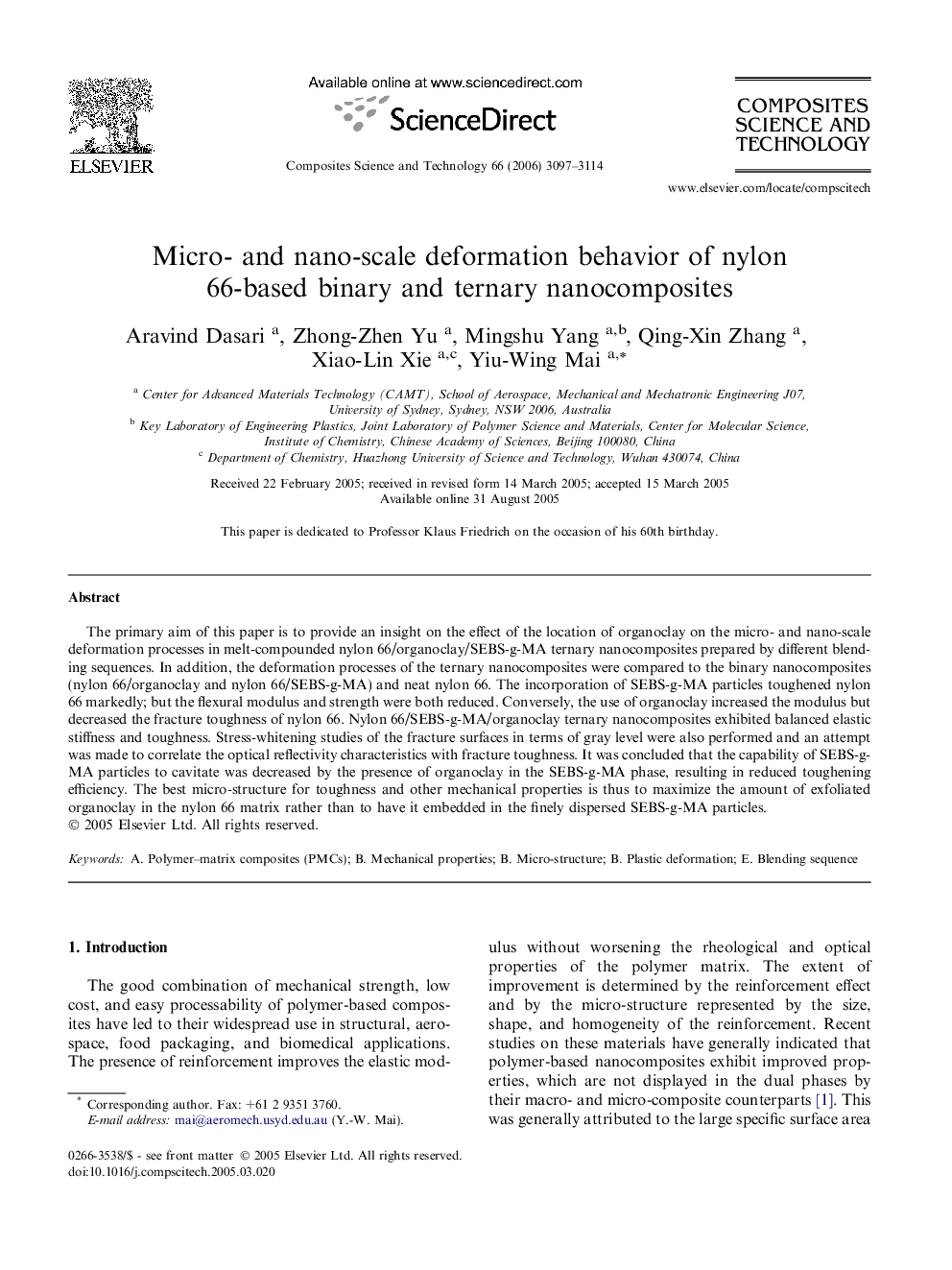| Article ID | Journal | Published Year | Pages | File Type |
|---|---|---|---|---|
| 822044 | Composites Science and Technology | 2006 | 18 Pages |
The primary aim of this paper is to provide an insight on the effect of the location of organoclay on the micro- and nano-scale deformation processes in melt-compounded nylon 66/organoclay/SEBS-g-MA ternary nanocomposites prepared by different blending sequences. In addition, the deformation processes of the ternary nanocomposites were compared to the binary nanocomposites (nylon 66/organoclay and nylon 66/SEBS-g-MA) and neat nylon 66. The incorporation of SEBS-g-MA particles toughened nylon 66 markedly; but the flexural modulus and strength were both reduced. Conversely, the use of organoclay increased the modulus but decreased the fracture toughness of nylon 66. Nylon 66/SEBS-g-MA/organoclay ternary nanocomposites exhibited balanced elastic stiffness and toughness. Stress-whitening studies of the fracture surfaces in terms of gray level were also performed and an attempt was made to correlate the optical reflectivity characteristics with fracture toughness. It was concluded that the capability of SEBS-g-MA particles to cavitate was decreased by the presence of organoclay in the SEBS-g-MA phase, resulting in reduced toughening efficiency. The best micro-structure for toughness and other mechanical properties is thus to maximize the amount of exfoliated organoclay in the nylon 66 matrix rather than to have it embedded in the finely dispersed SEBS-g-MA particles.
